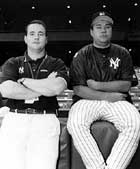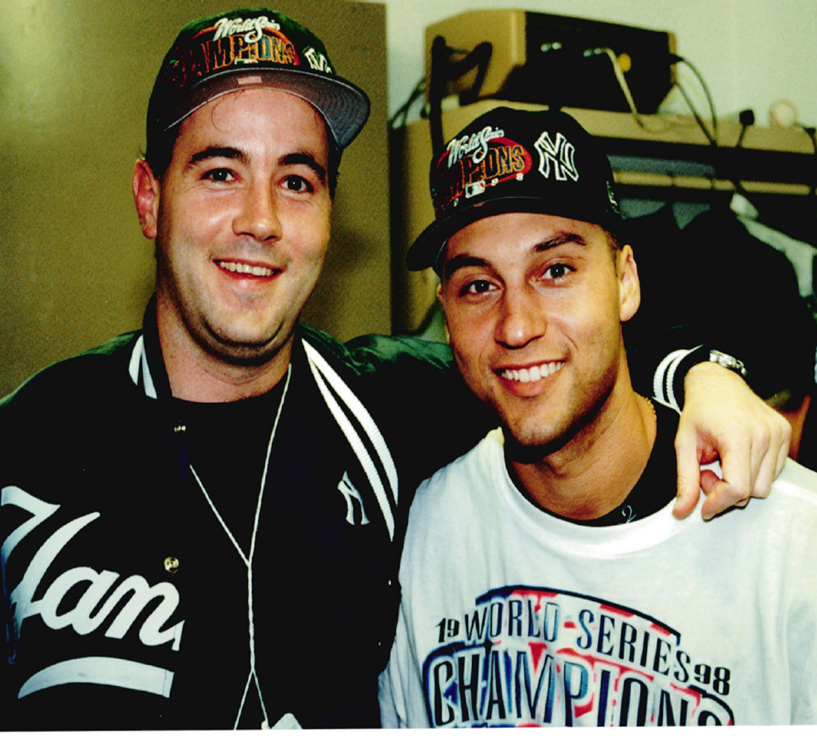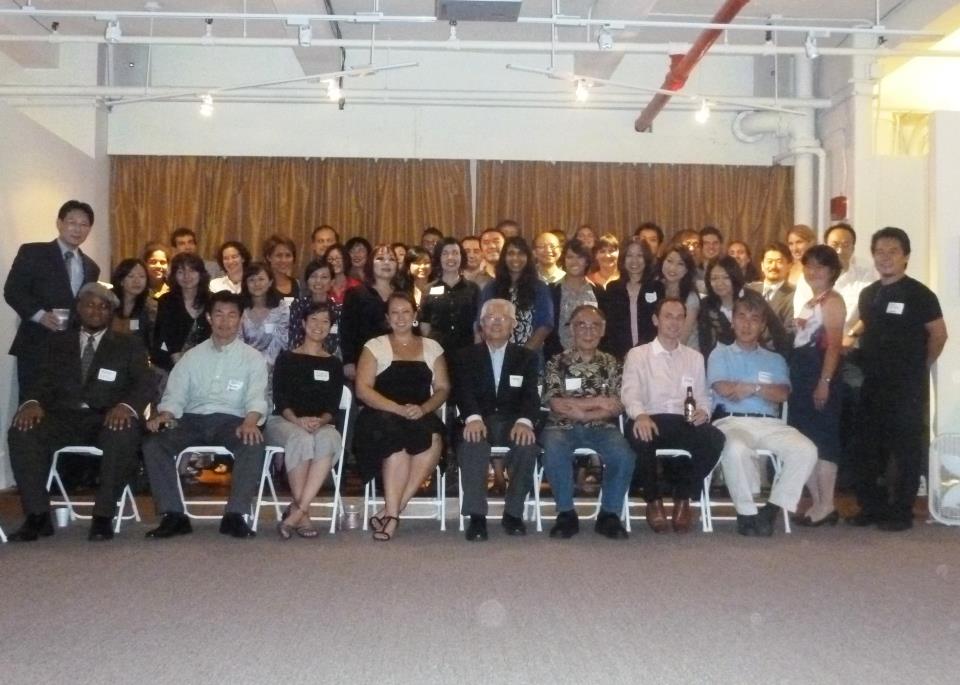JQ Magazine: Book Review – ‘Aftershock: Artists Respond to Disaster in Japan’
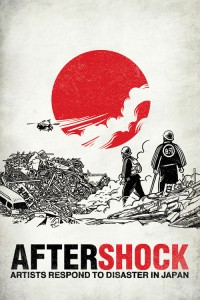
“I assumed a response to the earthquake would be grim. I was, however, relieved to see that there is a nice dose of playfulness alongside the serious, an homage to resilience and the inimitable Japanese sense of humor.” (Big Ugly Robot Press)
By Sharona Moskowitz (Fukuoka-ken, 2000-01) for JQ magazine. Sharona works at a literary agency in New York City. She is interested in fresh, new voices in fiction and creative nonfiction.
Composed in the wake of the catastrophic events of 3/11, Aftershock is something of a series of love letters to Japan written in the object of affection’s own familiar dialect: manga. Edited and compiled by American-born and Nagoya-based cartoonist Adam Pasion (Sundogs), the range of over 35 artists/admirers runs the gamut from the seasoned foreign resident to the casual Japanophile, each with an individual style and tone. The pieces are as eclectic as the artists’ experiences and personal ties to Japan, and all proceeds from Aftershock will be donated to relief efforts in northeast Japan.
When I first approached the anthology I wasn’t sure what to expect though I braced myself for gravity. Even in the form of manga, I assumed a response to the earthquake would be grim. I was, however, relieved to see that there is a nice dose of playfulness alongside the serious, an homage to resilience and the inimitable Japanese sense of humor.
For example, “I Was a Teenage Otaku” by JET alum and Tohonharu cartoonist Lars Martinson (Fukuoka-ken, 2003-06) traces the trajectory of the author’s interest in manga and anime, a hobby which “provided the spark that made [him] want to get out there and really explore” and eventually led to his move to Japan as an exchange student. Though his passion for the art form eventually waned, it gave way to a much broader appreciation of the Japanese arts in general.
JET alum George Rose quoted in NYT feature on Hideki Irabu
JET alum George Rose (Fukushima-ken, 1989-91), former interpreter for Hideki Irabu as well as former JETAA NY President, is quoted in a Sunday, October 9 feature article “Irabu Got Lost on the Way Back“) in the New York Times about Japanese pitcher Hideki Irabu who recently committed suicide. The article gives the impression that George was one of the few U.S. baseball colleagues who actually got to know Irabu personally.
Below is a link to the full article along with the quotes by George:
“When I saw him last summer, he told me he was having a midlife crisis,” said George Rose, who befriended Irabu when he worked for two years as his interpreter on the Yankees. Rose then repeated what had been a kind of conventional wisdom about the Irabu: he had a big heart, but could be his own worst enemy.
**********
“He was kind of searching for what to do next,” said George Rose, his old interpreter, “and he never did.”
For additional background on George, here’s a link to a 2008 JETAANY Newsletter interview with George Rose (“Pride of the Yankees: Far East Edition“) by Stacy Smith (Kumamoto-ken CIR, 2002-03).
In a speech on October 7 at the U.S.-Japan Council Annual Conference, U.S. Secretary of State Hillary Clinton lauded the JET Programme for its vital grassroots relationship building, cited the JET alumni community’s role in raising money for earthquake/tsunami relief and cited Monty Dickson and Taylor Anderson as models of the kind of cross-cultural exchange that is so important to successful relationships between countries and cultures.
Here is a link to Secretary of State Clinton’s speech on the State Department’s website along with a video. http://www.state.gov/secretary/rm/2011/10/175151.htm
Below are a few excerpts followed by the full text of the speech.
“More than 35,000 people have participated in exchange programs sponsored by our two governments, programs like the Fulbright and the Japan Exchange and Teaching Program, known as JET.”
***********
“[A]lthough these ties have already benefited both of our nations, they are not self-sustaining. We have to continue to invest in them.”
***********
“The American people are proud to count Japan among our closest friends. I recently heard the story of an Alaskan named Monty Dickson who taught English at Yonesaki Elementary School as part of the JET program. While in Japan, Monty came to love Japanese poetry, and on the morning of March 11th, he had translated a poem by Shiba Ryotaro into English, and it read: “There’s nothing as beautiful as dedicating one’s life for a cause.” And just a few hours after writing those words, Monty Dickson was swept away in the tsunami. In fact, both of the Americans who died that day, Monty and Taylor Anderson, were teachers in the JET program. Their lives and their cause are part of the fabric of the friendship that we now share. The Dicksons, the Andersons, and the entire extended family of JET alumni have been working to help the communities that both Monty and Taylor lived in and grew to love.”
***********
“The U.S.-Japan alliance is the cornerstone of a system in the Asia Pacific that has underwritten peace, stability, and prosperity for decades. And the close connections built by the Monty Dicksons and the Taylor Andersons and the U.S.-Japan Councils, those are the foundations that not only keep the cornerstones strong but keep building higher and higher.”
***********
Remarks at the U.S.-Japan Council Annual Conference
Remarks
Secretary of State
Posted by Ashley Thompson (Shizuoka-ken, 2008-2010) of Surviving in Japan: without much Japanese and Lifelines columnist for The Japan Times.
6 weeks. I can’t believe it has already been about 6 weeks since our dear daughter Ai-chan joined us in world. It’s mostly been a blur of sleep, insomnia, diaper changes, incessant feeding, incredible soreness and lots of baby time. But, reality shows up sooner or later and it’s time for me to try and start adjusting back into some sort of routine (while I hope that our child also figures out some sort of routine in the coming weeks).
I’ve mulled over sharing this experience many times, as I want to present it as objectively as possible, because to be honest I came away from the experience completely traumatized. NOT because of the fact I gave birth in Japan, just the labor and childbirth process itself. So, I’ll do the best I can here, and please understand that this is only my experience. Everyone has completely different birthing experiences, no matter where they are in the world, and even in Japan, your experience may differ depending on your doctor or midwife, and various other factors.
However, I don’t believe there is any reason to fear giving birth in Japan (and I do speak from personal experience now!), so rest assured that as long as you find a doctor or midwife you like and (hopefully) trust, you should be fine (well, as fine as you can be going through this kind of experience…)
*******
Our daughter was due on August 22nd, but the day came and went rather uneventfully. No baby.
I was tired of being a giant whale in the ridiculous heat of summer, so was eager for the baby to hurry up and come out. My husband and I did what we could to “prepare” (although in hindsight it was worthless – how can you “prepare” if you’ve never given birth before? You have no idea what it’s going to be like or feel like), and basically waited, while visiting the doctor twice that week for fetal monitoring. [Side note: After 40 weeks in Japan you typically visit the doctor twice a week.]
On Friday, the 26th, we were at the clinic again for another heart rate test of the baby in the early afternoon, and the doctor said I was 2 cm dilated and that I would likely go into labor within the next couple days.
Later that evening, as my husband and I ran errands, I started getting random contractions. I’d never felt a contraction before, and the doctor had asked me at the past few appointments if I had felt any contractions yet, but my answer was always “no.”
I figured the contractions I was having were just the practice kind preparing my body for labor, so didn’t worry too much. We ate dinner at home, watched some TV and went to bed (I was still having irregular contractions).
The contractions continued over the next couple hours, though I just kept trying to sleep, as I was incredibly tired. My husband, on the other hand, was wide awake during all this and timed the contractions. They actually became regular, and went from 10 minutes to 5 minutes apart in the course of a few hours. I also started bleeding a little, and so after calling the clinic, the nurses told us to come in. — CLICK HERE to read the rest of the post.
WIT Life #182: Japan Connections where you Least Expect them
***************************
WITLife is a periodic series written by professional Writer/Interpreter/Translator Stacy Smith (Kumamoto-ken CIR, 2000-03). She starts her day by watching Fujisankei’s newscast in Japanese, and here she shares some of the interesting tidbits and trends together with her own observations.
My latest International Visitor Leadership Program travels bring me to Riverside, California for the first time, host of the recent Sister Cities International conference highlighted here in JetWit. My group and I are staying in the lovely Mission Inn (referenced in the Sister City write-up), a national historical landmark established in 1876. Today we took part in a tour of the facility, and I was surprised to find out about its Japan connection!
Founder Frank Miller wanted to create a resort hotel for Riverside, which by the 1890s was Read More
Return on JET-vestment: AJET Chair Matthew Cook on the recent 25th Anniversary JET Programme Symposium
*****************
Originally posted to the AJET website by National AJET Chair Matthew Cook (Osaka) who was an attendee of the 25th Anniversary JETProgramme Symposium, where, notably, JET alum Jim Gannon (Ehime-ken, 1992-94), Executive Director of the Japan Center for International Exchange (JCIE/USA), was invited to speak about the JET Programme and the JET Alumni Association.
It’s been a significant month in the world of the JET Programme.
On September 8th, the ministries hosted a commemorative symposium at the University of Tokyo to discuss 25 years of the JET Programme; what it has accomplished, and what challenges it faces today. The symposium featured many notable
speakers, such as United States ambassador to Japan, John Roos, and Ms. Yoko Kimura, the Chair of the Board of Directors of CLAIR.
On behalf of AJET, myself and AJET council members Mark Noizumi (treasurer) and Amelia Hagen (Block 10 rep) attended. After brief opening statements by the ministry heads, many speakers were given the chance to spotlight JETs’ achievements, and voice issues pertinent to the program.
One issue, for Japan as a country, that repeatedly came up was the fact that the number of Japanese students who study abroad or attend universities in foreign countries has been on a steady decline for years. This is particularly troubling in light of Japan’s efforts to globalize as more and more businesses are enforcing English as a required standard.
A highlighted concern for the JET Programme itself was the increasing number of Boards of Education who hire ALTs privately, or through recruiting companies other than JET. One of the many challenges the programme faces is how to best promote the value of what we do, and the return on investment that we can provide to the communities we serve.
As the Chair of AJET, I am fortunate enough to work with many people who have done amazing things with their time on JET. As such, I am aware of the many benefits of the JET programme that are sometimes overlooked. However, this made me question…. is everyone else?
How do we as JETs promote the value of what we do and the return on investment that we provide to the communities we serve?
For example, did you know that over 20 of the employees at the U.S. Embassy in Tokyo are former JETs? Did you know that after the March 11th disasters, current JETs raised an estimated ¥140,000,000 yen towards the relief efforts? These are only two examples of ways that JETs have given back to Japan. The benefits of JET are vast, and the elimination of the program would have far reaching consequences.
Toward the end of the day, the governor of Kyoto made an interesting point that stuck in my mind. He said that he believes the competition of privately hired JETs and the decrease of requests for JETs is actually a good thing! He reasoned that this competition would serve as a stimulus for positive change in our programme to become better and to show more quality than it ever has in the past.
That’s when I realized…. We ARE the positive change in the system now. As we speak, AJET has been working on more ways to provide resources to make JETs better teachers. Ways to learn Japanese more fluently. Opportunities to develop ourselves professionally in the field of education.
Not only that, but we’re finding better ways to connect to each other online and in person via social media and larger scale, better planned volunteer efforts! We’re finding better ways to let JETs VOICE their opinions and concerns to the not only the ministries, but to the people we interact with in our communities and workplaces everyday!
So, do we need to wait for the ministries to “save JET”? Should we wait for JET Alumni to prove that the Programme is a world-renowned program, that should be held in the highest regard so that we have luck with future employers?
No.
We need look no farther than to ourselves for this. We ARE the future of JET. Current JETs lay the ground-work for our successors who come next to fill our shoes.
I feel honored to have attended a symposium of so many people who have made amazing contributions to the JET Programme, and who all have a stake in its survival. I think we should take this symposium as a reminder that now
is the time for us to make more of this experience. The time is now for us to work together to be something MORE. I personally can’t wait to get started making that happen. I hope you’ll join us.
Matthew Cook
National AJET Chair
Symposium Speakers
Jim Gannon
Former JET and Executive
Director of the U.S.
based Japan Center for
International Exchange.
Keiji Yamada
Governor of Kyoto
Prefecture, President of
the National Governors
Association
Masao Niisato
Professor at Tokyo
International University
Angus Lockyer
Chair of Japan’s Research
Centre, University of
London
Jin Ah Kim
Director of International
Cooperation Department,
Governors Association of
Korea
Yoko Kimura
The Chair of the Board of
Directors, CLAIR
Akira Nakamura
Emeritus Professor
*****************
With increased potential for budget cuts to the JET Programme and to JETAA and additional prefectures opting to use private ALTs rather than JETs, it’s good to see an example of a prefecture making effective use of JETs to provide significant Return on JET-vestment.
Toyama Prefecture has for the past two years been using its CIRs & ALTs to promote tourism through their Twitter and FB accounts or other means. More explanation is available in Japanese at: http://www.pref.toyama.jp/cms_press/2011/20110915/00007707.pdf
This year, according to this notice, they were planning to take their six ALTs (4 Americans) and two CIRs (both Americans) around to the big tourist attractions and then have them put out word-of-mouth to promote them, through Facebook, Twitter, blogs, or actual word-of-mouth after they go home.
There’s no reason other prefectures can’t adopt similar programs with their JETs and CIRs and why JETs and JET alums themselves can’t initiate this kind of activity.
While it’s relatively easy for local governments to find native English speakers to teach in their schools, it’s much harder to bring in teachers who will feel a connection to the community that lasts a lifetime and continues to provide tangible and intangible benefits over the long term. And that is the power of the JET Programme.
*************
Thanks to Matt Gillam, Senior Researcher at CLAIR-NY (aka Japan Local Government Center), who attended the recent Sister Cities International Conference in Riverside, CA, for writing up a little something about the conference and noting how JETs were present in several ways.
A little context: Back in July, several JET alum reps including Mike Shu, Jessyca Wilcox and myself along with Matt met up with Sister Cities International when we were in D.C. for the JETAA USA National Conference to talk about potential collaboration. The topic was subsequently discussed with JETAA chapter reps in a session at the JETAA USA National Conference.
“I just got back from the Sister Cities Pan-Pacific conference in Riverside, where we had a chance to gauge interest in the idea of making alumni available to cities to help out with their sister city relationships. The reaction I got was that there is definitely interest, and not just limited to sister cities matters. There seems to be quite a need for help with other visitors from Japan as well, where cities lack people with knowledge of not just language, but also cultural and social norms.
Mark Juloya and Russell Iriye, from JETAA Southern California, came for the conference and Russell participated in a session on “Best Practices in Youth Programming”, where he talked about JET & JETAA. In the Q&A after his presentation, I had a chance to mention the alumni as an available resource for cities and a couple of people were quite interested. Overall, as I said, the response was positive, and Mark and Russell were also great exemplars of the kind of talent JETAA has to offer.
On Sunday, Sendai City put on a display at the most popular spot in town (the Mission Inn) to talk about how the city is recovering and to thank Riverside for all its support ($584,000 in donations, plus the area dispatched USAR (Urban Search and Rescue) teams etc. to the region immediately following the disasters). Audrey Shiomi, a former CIR in Sendai City, also came out to help for the day. Audrey is one of those former JETs who have taken advantage of the program to revisit their former communities in Tohoku, and another great example of how valuable alumni can be to their former employers.
And one more person to mention is Renay Loper, who’s with the Japan Foundation’s Center for Global Partnership now. She was there with a Japanese colleague to attend the conference, since CGP was helping to fund it.
JETs are everywhere.”
Matt Gillam
JLGC, New York
New New Jersey JETAA Subchapter
 Via JETAA NY:
Via JETAA NY:
JETAA NY is excited to kickstart a new subchapter on the other side of the river – in New Jersey!
Those interested can join the Facebook group and read about our NJ Subchapter Representative, Rachelle de Leon, at http://jetaany.org/about/contacts/ (scroll to the bottom).
Rachelle can be contacted via the Facebook group and/or email at njrep [at] jetaany.org.
Return on JET-vestment: JETAA NY joins Kyushu Battenkai for Fall Gathering
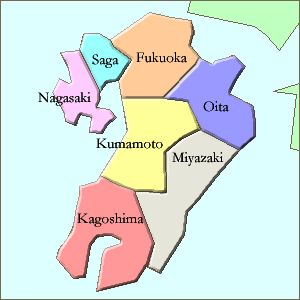 Via JETAA New York. A great example of JETAA providing Return on JET-vestment at the local government level:
Via JETAA New York. A great example of JETAA providing Return on JET-vestment at the local government level:
Terrific Turnout for Kyushu Battenkai’s Fall Gathering
“With over 60 people in attendance from both JETAANY and the Kyushu BattenKai, we enjoyed another successful joint event with the Kyushu expat organization (see the picture from the end of the evening above). We look forward to working with them again.”
Return to Tohoku: “Don’t Speak, Just Move On” by Audrey Shiomi
*******************
The following is a personal essay by Audrey Shiomi (CIR Miyagi-ken, Sendai-shi, 1999-2001). Through generous sponsorship by Japan’s Ministry of Foreign Affairs, she spent a week in September visiting her former residence in Sendai City, one of the areas affected by the March 11 earthquake. In lieu of volunteering in disaster-stricken regions, she spent each day meeting with friends and former coworkers to listen to their stories.
Click here to read other Return To Tohoku updates on JETwit. You can also check the JETAA USA website post (“JET Alums Return to Tohoku”) for additional information.
Don’t Speak, Just Move On
By Audrey Shiomi (CIR Miyagi-ken, Sendai-shi, 1999-2001)
I couldn’t believe how normal it all felt to spend each day hanging out with old friends in Sendai. They hardly talked about what had happened six months ago, and if they did, they were calm, reflective and grateful. They didn’t suffer the way they did in the north, along the Pacific coast.
Within city limits, homes were damaged and people were left without running water, electricity and heat soon after the earthquake. It was late winter, and they had no clue when things they’d taken for granted—warmth, hot food and information—would be readily available. The minute it looked like a market was about to re-open, people formed long lines out the door. Luckily, by Day 5, water and electricity had been restored.
Now, six months later, my friends are with me, laughing, drinking and eating like there’s no tomorrow. We were doing everything but dwelling on March 11 and for good reasons. For one, it was simply time to more forward. For another, talking about your own situation made it seem like you were complaining about it, and—as my friend explained—the only people who are socially allowed to lament are those whose loved ones died in the tsunami.
Another reason few people talk about the events of March is that if someone were to mention they temporarily fled the prefecture after the nuclear reactor meltdown, they’d face the silent scorn of their peers. For some, leaving town was a logical safety measure. For others, leaving town was the moral equivalent of abandoning your family. It’s these opposing schools of thought that make it difficult to openly talk to one another. “It’s like in the U.S. where people don’t bring up religion,” said one Japanese friend. “People don’t talk about certain parts of their experiences after the disaster.”
So instead of dwelling in the past, my friends have no option but to move forward. For many of them, March 11 instilled a newfound reason for living. Many have taken up new hobbies and started traveling more. My friend, Nanae, has been making a living by holding private cooking classes at her home. March 11 fueled her to hold more classes. The way she sees it, she’s lucky to be alive, so not living life would be like besmirching the memory of all those who’d died.
I’m glad my friends have emerged from this tragedy with their heads held high. It would have been a sad reunion if they’d greeted me with distressed tears. If they’d told me, “Take me back to the U.S. with you!” I would have stowed them all away in my suitcase. But, no, instead we’re able to share a drink, enjoy great izakaya food and laugh about old times.
That’s the Japan I know.
JET Alum Author Beat 10.05.11
JET Alum Author Beat is a new feature by Ling Tran (Saga-ken, 2009-11) intended to keep readers informed of what various JET alum authors are up to. Contact Ling at jetwit [at] jetwit.com if you’d like to see something included in upcoming posts. She is also interested in providing exposure for aspiring authors/writers among alumni and current JETs – excerpts and updates are all welcome.
- Suzanne Kamata (Tokushima-ken, 1998-90), author of Losing Kei and fiction editor for Literary Mama, reflects on the recent loss of a dear friend through a post about her first sushi experience on Gaijin Mama (a personal blog). Check it out and give some JET support.
- Sam Baldwin Ono (Fukui-ken, 2004-06) hails from the UK and made a life altering decision when he decided to move to Fukui-ken through the JET Program. The quiet facade of inaka Japan gradually revealed its colorful nature, eventually leading Sam to share stories and insights in For Fukui’s Sake: Two years in rural Japan. Whether for reference (newbie JETs, holla!), nostaliga, or reflection – ESID aside – this book is available electronically. If you want to be notified of its hard copy release, click here. Visit the website For Fukui’s Sake for details. (Fukui t-shirts are also available for purchase.)
- Author of The Order of Odd-Fish James Kennedy (Nara-ken, 2004-06) recently did a Q&A with JQ magazine as he will be curating the 90-Second Newbery Film Festival (Nov. 5 @New York Public Library | Nov. 16 @Harold Washington Library, Chicago). Read here.
- Robert Paul Weston’s (Nara-ken, 2002-04) Zorgamazoo will be honored at the Author Banquet of the California Library Association Conference for a California Young Reader Medal on Nov. 12. Details of the upcoming event are available on Weston’s blog. Congratulations!
- What is Japanamerica blogger Roland Kelts (Osaka-shi, 1998-99) reading these days?
- Cartoonist Lars Martinson (Fukuoka-ken, 2003-06) has been busily settling into his new home and schedule in Kameoka, Kyoto. He managed to fit in a brief post after a short hiatus. Eager followers can see how he is doing here – more substantial updates to come!
Les Pumps: Japan-inspired Shoe Art
by Lee-Sean Huang (ALT, Oita-ken, 2003-06). Lee-Sean is an artist, designer and educator based in New York City. He is the webmaster of JetWit and JETAANY. His new Art & Design Observer series features profiles art, design, and culture with a Japanese flavor.
Les Pumps is a collection of handmade art by the Barcelona-based Brazilian artist Caio de Paula Marques that uses vintage women’s shoes as 3D canvases. Caio decorates the shoes with hand-painted details and applies old manga art as a collage. The first Les Pumps collection is called “Sakura Vintage,” and Caio cites Japan as a major influence for his creative work. Are there any JET visual artists out there whose work has been influenced by Japan? Let us know in the comments, and we can feature your work here on JetWit.
According to the artist:
Les Pumps was born out of the need of creating an artistic project, in a more old fashion way, that involved manual crafts and to have a little break from using mainly digital tools as I have done as a graphic designer in the past years.
So in the search for interesting structures, aiming to work in a three dimensional way, and being a shoe lover myself, such fetishistic object of the feminine world seemed the perfect canvas for my art work.
Many hours have been put into each pair, from the investigation and purchase of the shoes, through which I´ve learned a great deal (now I can tell the difference between a pair of pumps from a pair of stilettos) and the many steps of execution till the final piece is ready, an average of 15 hours is needed.
For my first collection, the main motif has been SAKURA (meaning cherry blossom) so full of symbolism in Japan, reflecting the great interest I’ve always had towards this country and its culture ever since I can remember.
Perhaps the most innovating about this collection has been the use of COLLAGE, technique that allows the creations of different contexts and in this case, also recycles other artist’s works, which also relates to the concept of Vintage. Once more, the Nipponic culture is present as the paper I use is actually from 80’s manga.
VINTAGE SHOES have been my choice, as they convey history and strengthen the artistic value and the concept of uniqueness.
JETAA Music City to host it’s first Nihongo Dake Dinner!
**************
Thanks to JETAA Music City President (and Arkansas Cherry Blossom Princess) Terry Vo (Kumamoto-ken, 2007-09) for the heads up:
Join us for a Japanese-Style Potluck on October 4, 2011. Come mingle, eat, drink, and be merry! This event is open to our Friends of JET Alum as well so please feel free to invite your family and friends! Please bring either your favorite Dish, Dessert or Beverage!
RSVP DEADLINE: September 30 to Leah atvp@jetaamc.org
Location: 1812 Cahal Avenue, Nashville TN 37206″
Job searching advice from JETAA Tokyo
Via JETAA Tokyo’s Career Digest:
- “A Recruiter’s Guide to Finding Work in Tokyo” – by JETAA Tokyo President and former recruiter Byron Nagy
- “Getting That Perfect Job” – by JET alum and former CLAIR staffer Christian Tsuji

